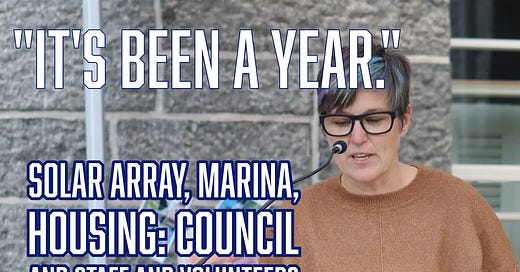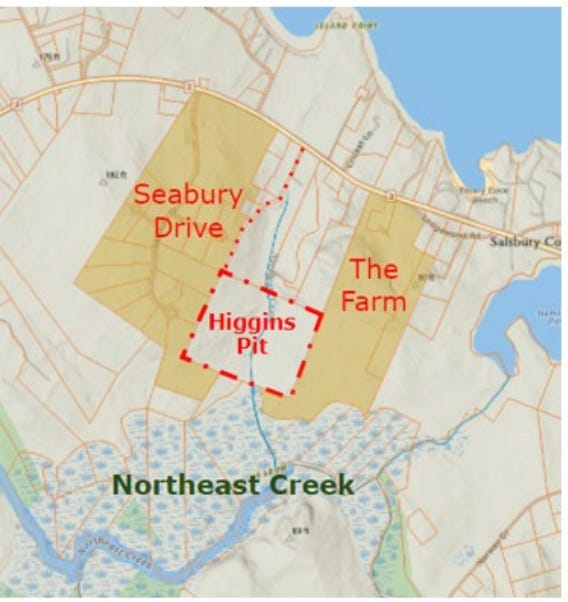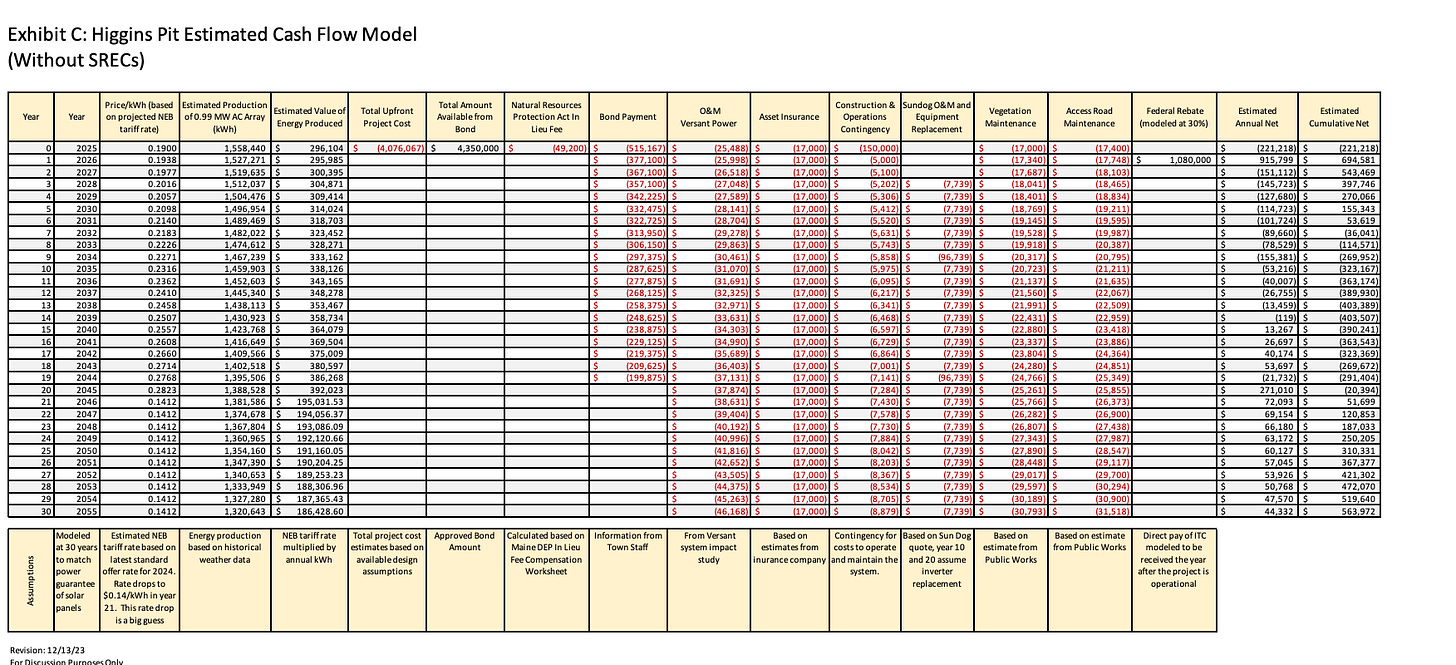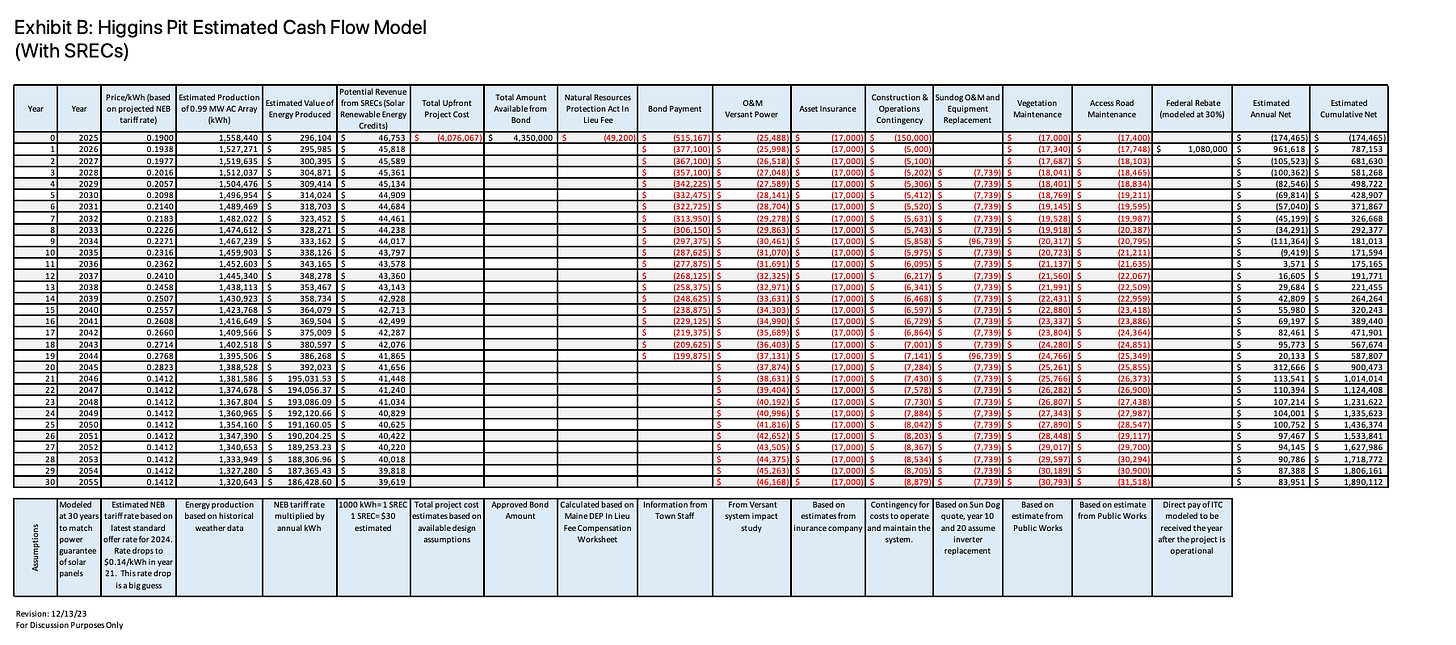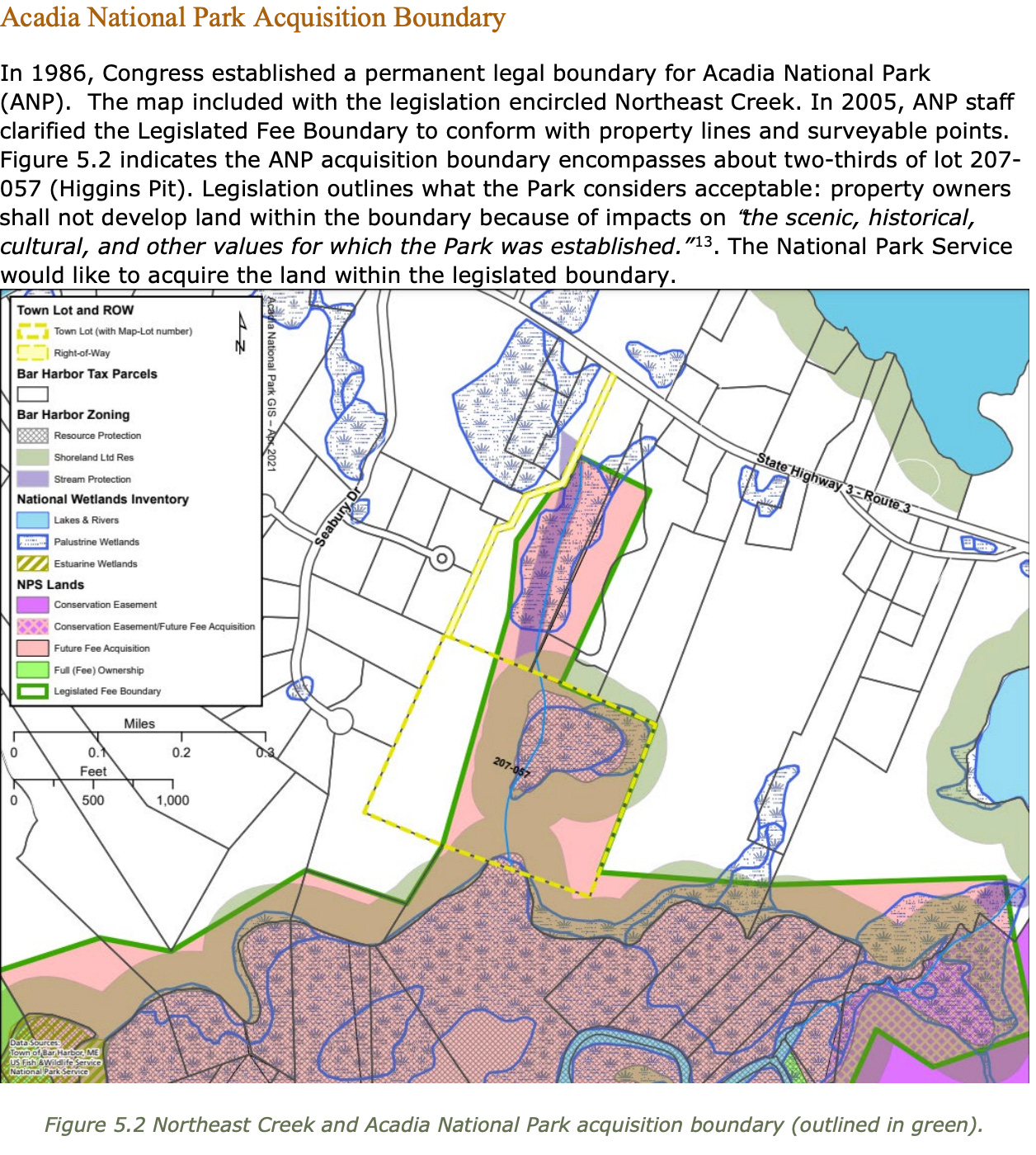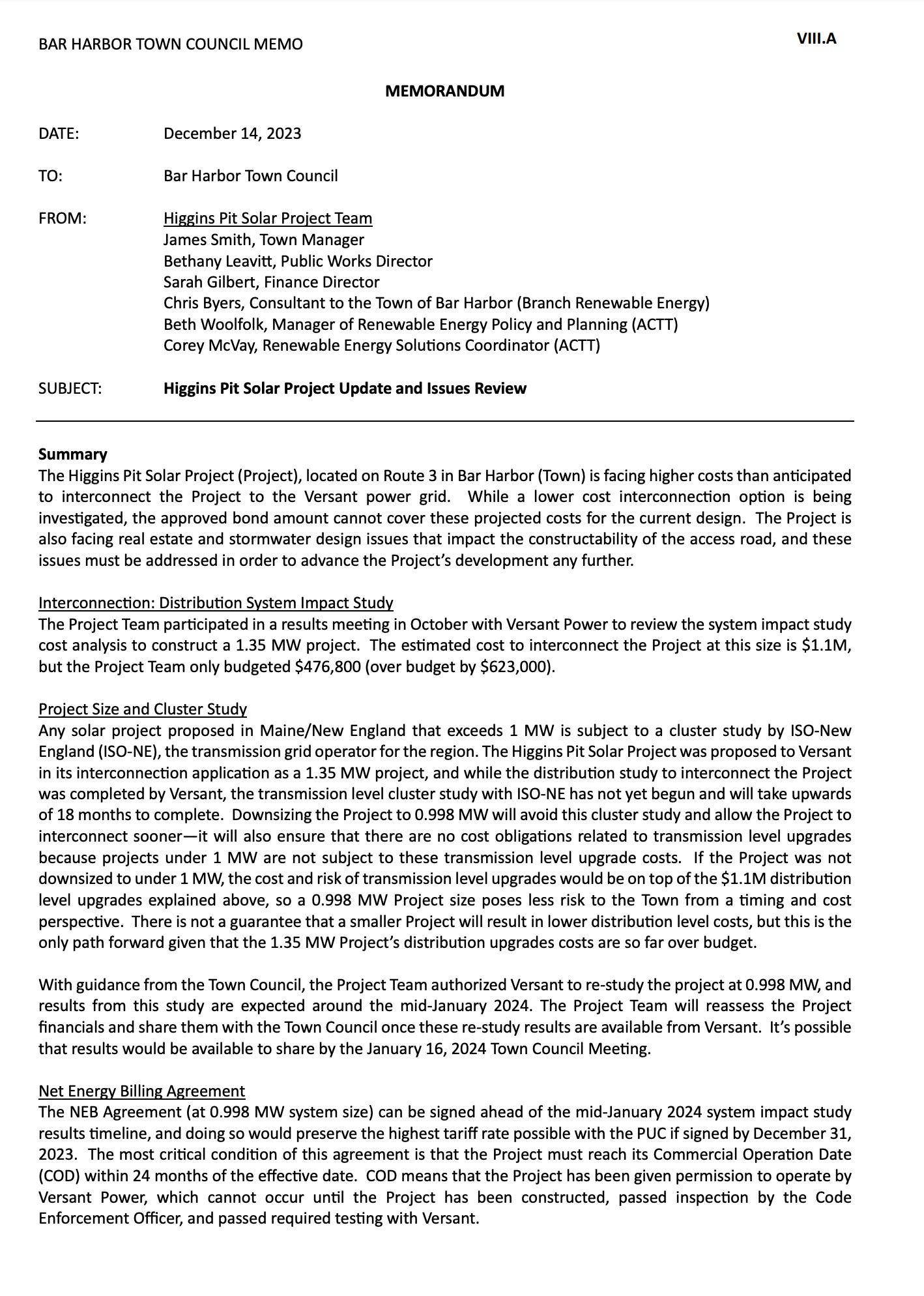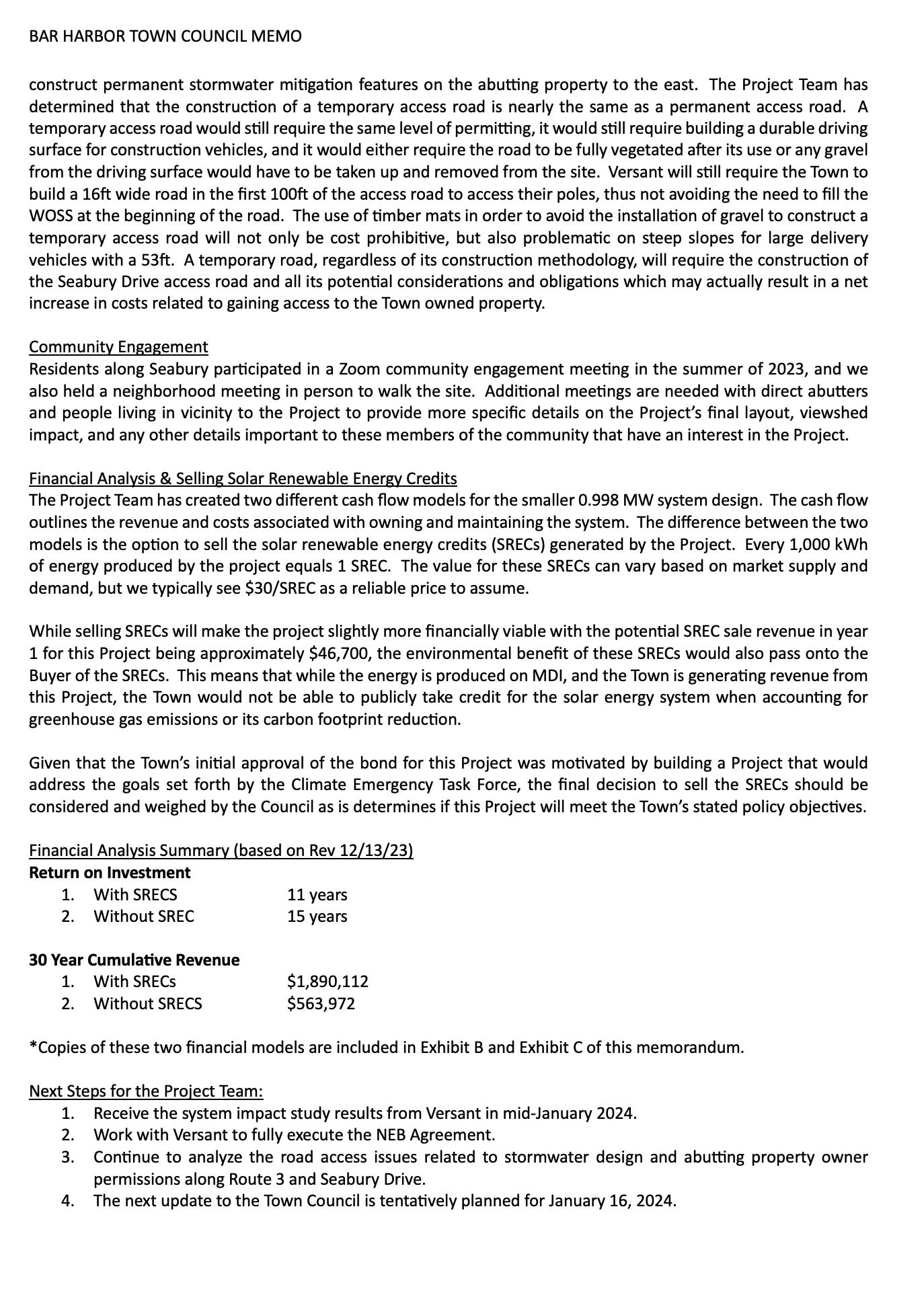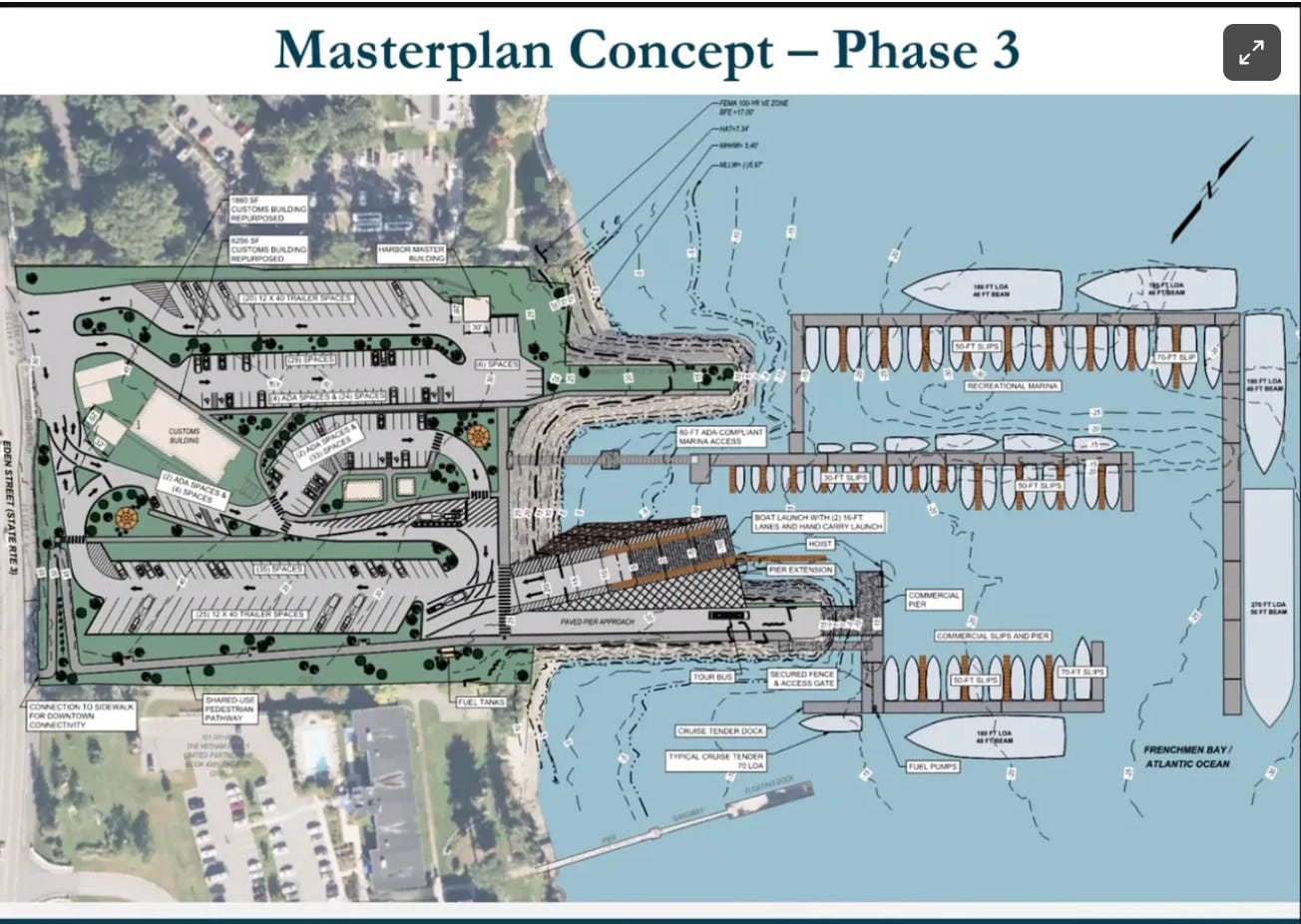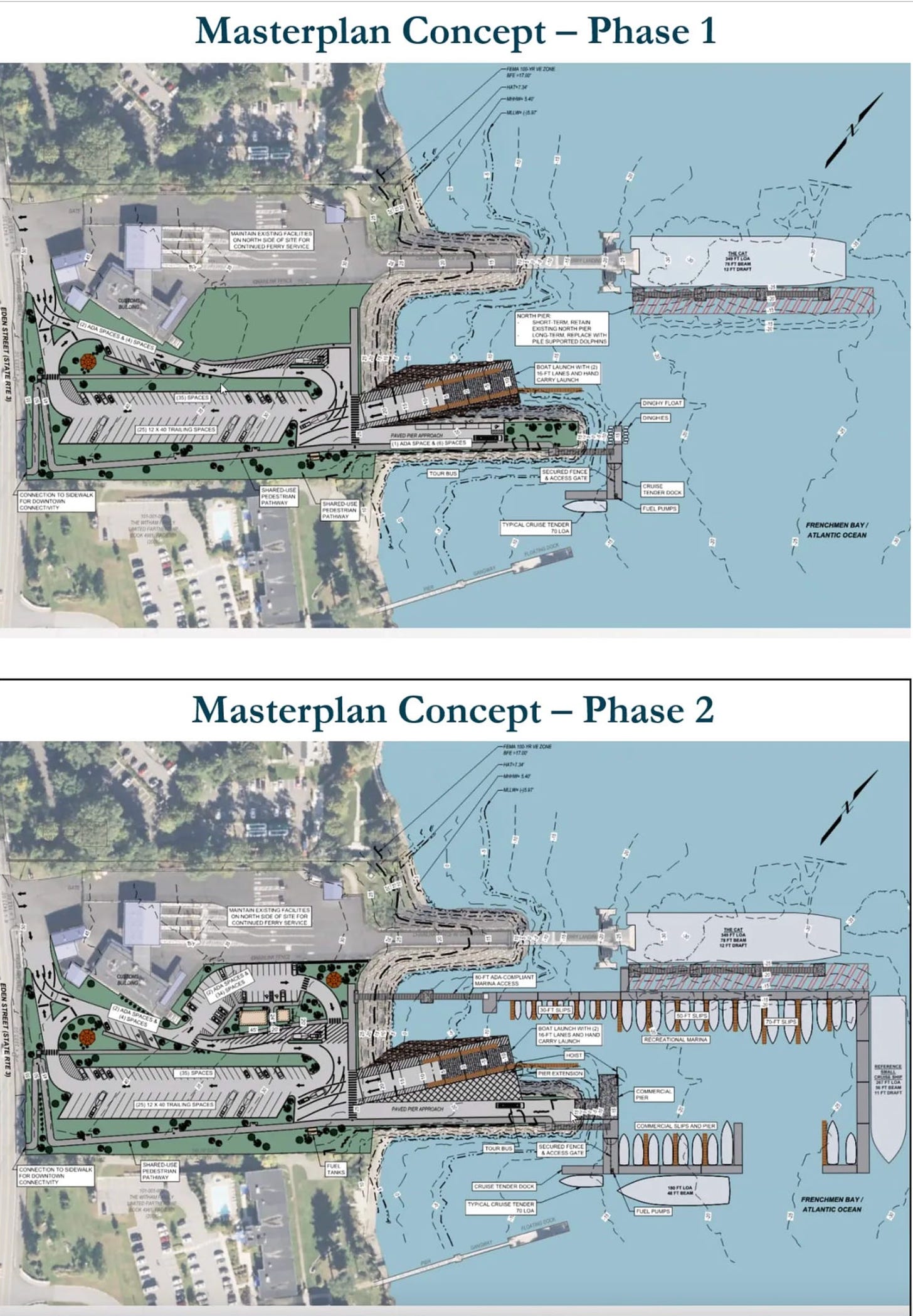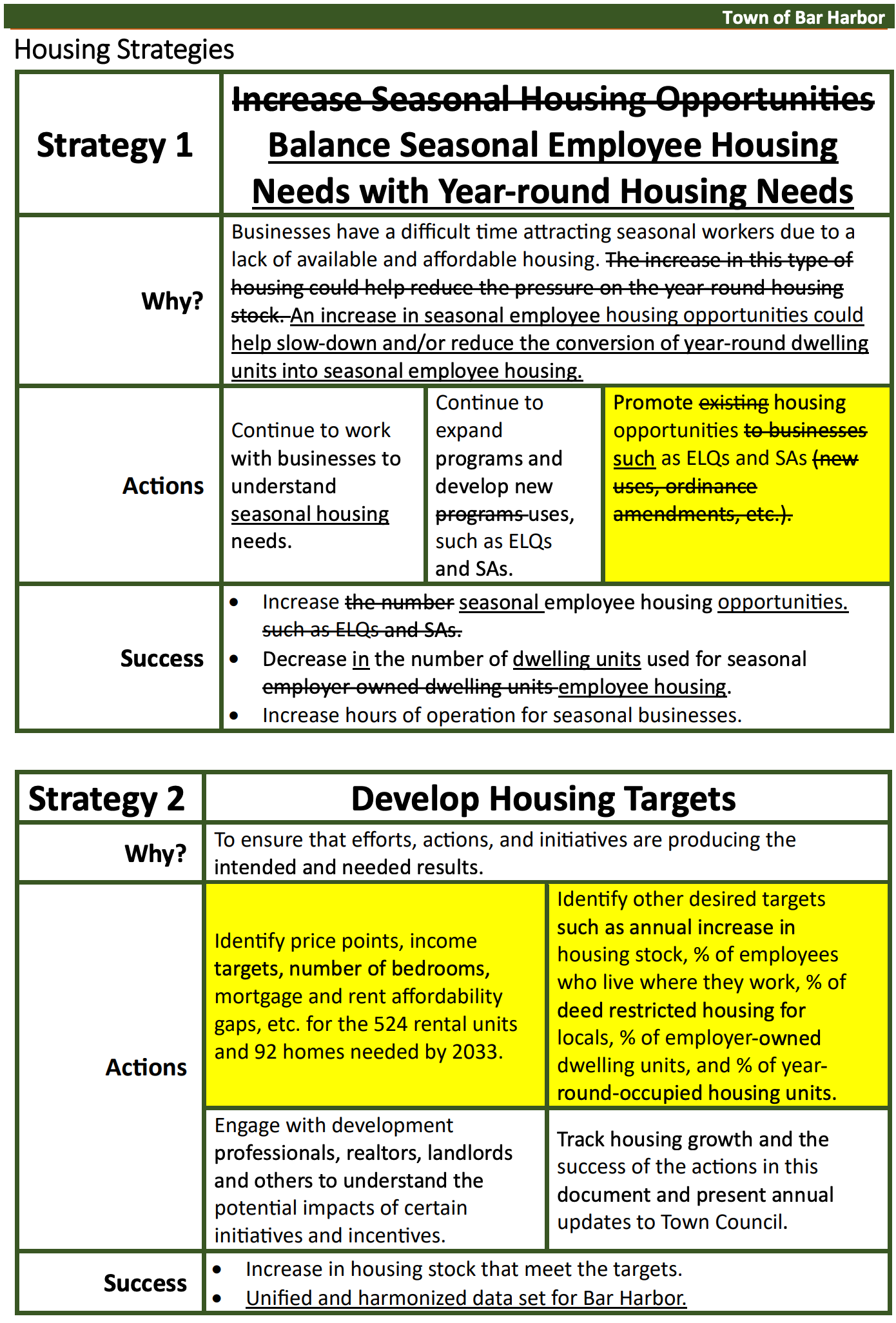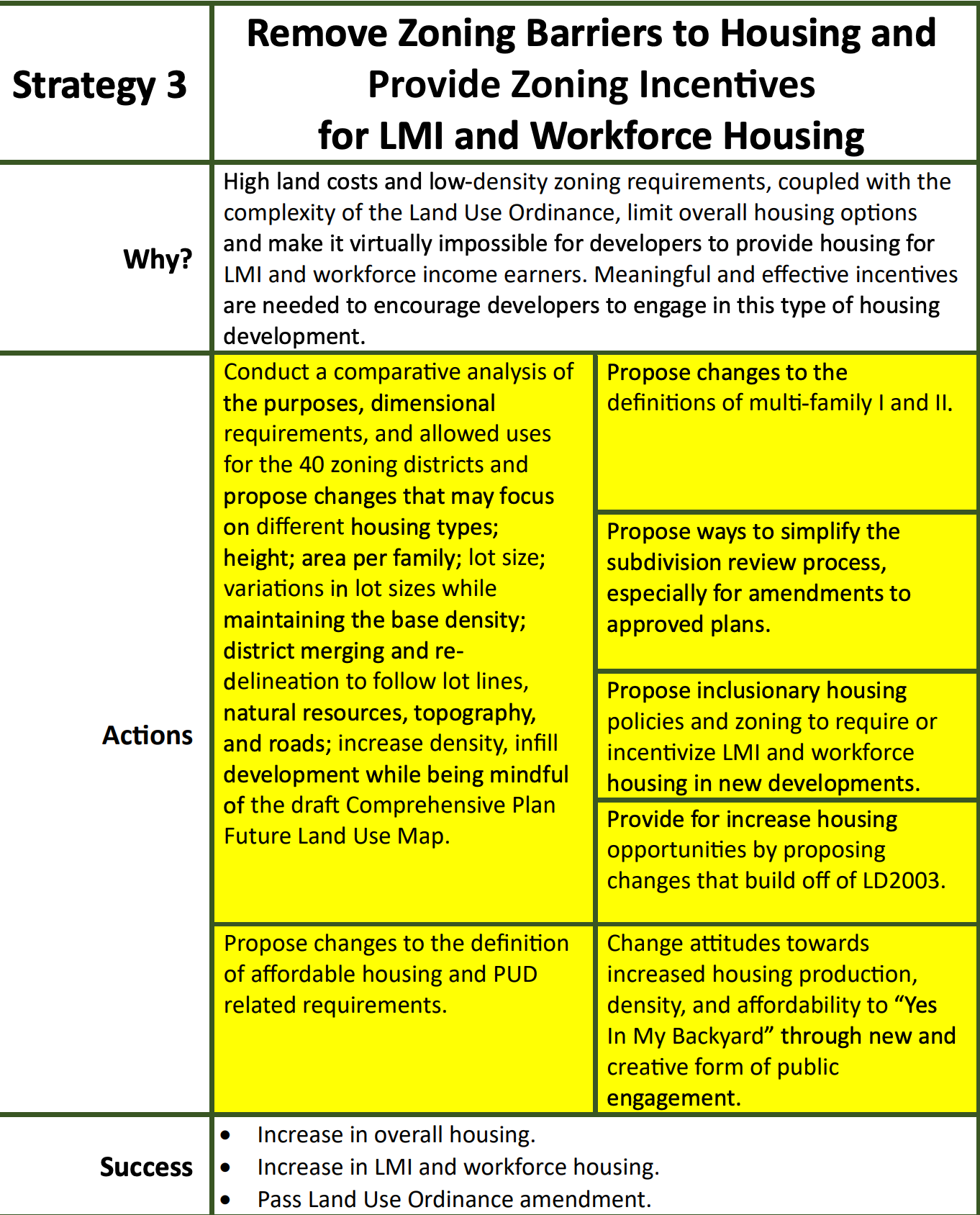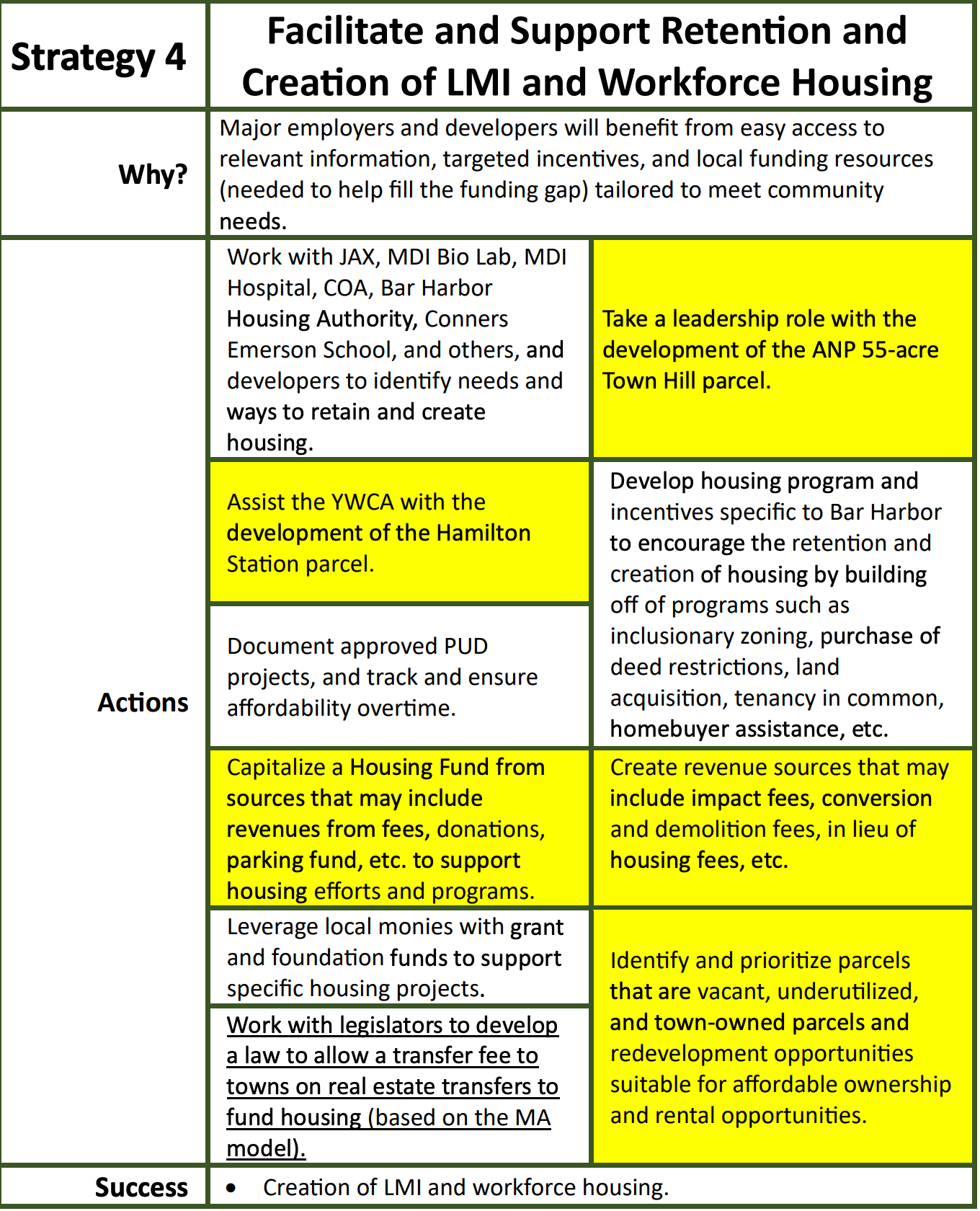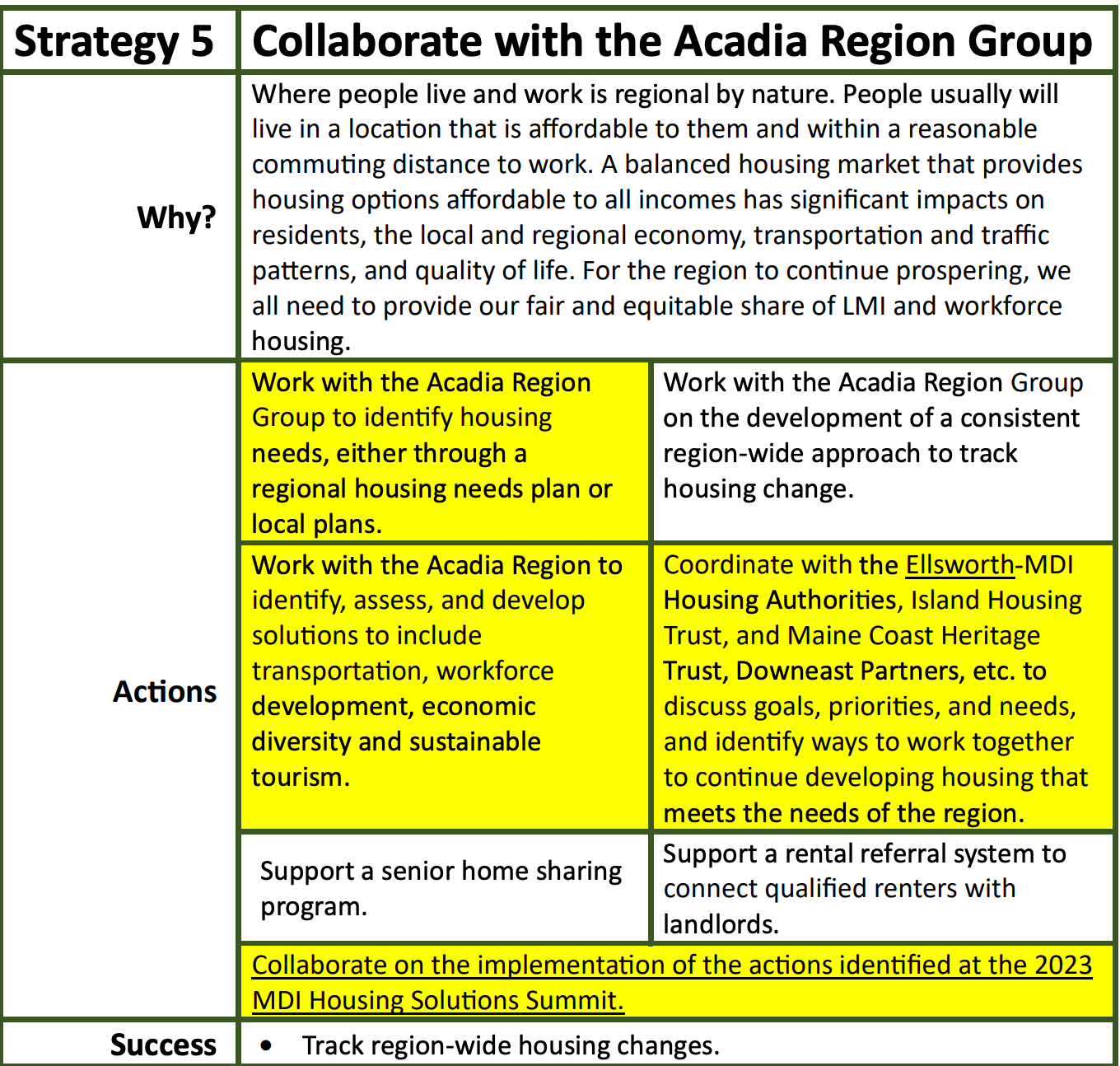"It's Been a Year."
Solar Array, Marina, Housing: Council and staff and volunteers tackle them all
BAR HARBOR—“It’s been a year. That’s what I feel about the end of this year,” Bar Harbor Town Council Chair Valerie Peacock said at the end of the Council’s last meeting of the calendar year, December 19.
For the Town Council, it’s been a year full of federal lawsuits, a year where a town manager resigned, two coordinators were let go, the planning department expanded, a police chief retired and another moved up the ranks, and a year where another town manager was hired. It’s been a year of elections, discussing housing and creating comprehensive plans and approving a bond to build a new school and a year where a longstanding committee was disbanded.
Now, Peacock feels like the town is in great shape and moving forward. “I feel like we’re in a good spot and ready for maybe a bit of a better year.”
To that end, the council discussed three large items that have the potential to shape a lot of Bar Harbor’s immediate future: the Higgins Pit Solar Array Project, the Housing Policy Framework, and the proposed town marina and boat launch.
Councilor Earl Brechlin had an excused absence and was not at the meeting.
SOLAR ARRAY PROJECT
Chris Byers of Branch Renewable Energy and Beth Woolfolk of Climate to Thrive gave an update about the solar project at Higgins Pit. The project is for a solar array that was originally conceived as a way to provide power for all of Bar Harbor’s municipal and school buildings.
The original project was proposed as a 1.3-megawatt array, which would have cost $1.1 million to connect, Byers said. That was approximately $600,000 over budget.
It has been downsized to a .98 megawatt array.
This would potentially make it less costly to interconnect to Versant, avoid a cluster study, and make it not subject to transmission level costs. It also qualifies the project for a full direct pay program. Cluster studies can take 18-24 months. The hope, Byers said, was to move the project forward quickly.
To that end, the project’s net energy billing agreement was executed Tuesday. That agreement allows the town to get money from the project. Once that is executed the town has 24 months to turn the project on, the project must be built and operational.
Byers said they are waiting on the results from Versant for a cost update. He hopes to get that by early January. He said, “We have filed for an interconnection application. We got some results back a few months ago.”
Byers and Woolfolk also presented potential financials, but stressed that all the factors are not yet known. They expect to have an updated analysis in January. There will also be a better idea of interconnection costs in January.
“This has huge impacts on the financial viability of the project,” Council Vice Chair Gary Friedmann said, hoping for an explanation of the conservative estimates and rates, especially projected tariff rates. There is a lot of volatility in the market, Friedmann said, which makes him concerned about the projected financials, which he said are very conservative for the value of production.
“The projection here is an extremely conservative projection for the financial benefit to the town,” Friedmann said.
Year one shows a deficit.
“The project is expensive,” Byers said, but in year two, when the tax credit occurs, there will be a huge influx of cash, he said. Expenses for operation and maintenance continue in perpetuity and money (the cash of year two from a federal tax credit) needs to be set aside in an escrow fund or something similar to pay for those difficult years. Around year 11, the project will be cash flow positive because they expect electricity rates to increase. At year 20, the town stops its bond payment and profits increase.
Vegetation maintenance is estimated at $17,000 to 30,000 a year as is access road maintenance.
Friedmann felt those numbers seemed high, calling the numbers a worst case scenario for the town. Byers said the numbers came to them with help from Public Works Director Bethany Leavitt.
“It’s not a set it and forget it” kind of project, he said of the solar array, but a complicated piece of equipment that requires regular maintenance. The access should be the same as it is for construction, which requires a durable road, he said.
“I do a lot of this work and these things always cost more money to maintain than you think,” Byers said.
The bigger “bleeding arteries” for expenditures are the interconnections, Byers said. There are also real estate issues. To build the road from Route 3, they need to treat the rain water that comes off the road and not put it into the wetlands that are on the site. This could occur with help from a neighboring land owner. The town also could potentially gain access via Seabury Drive. Currently, they don’t have all the site control to build the road, Byers said.
“This is a substantial piece of property that currently has no value to the town,” Friedmann said, and anything that the project does to provide access to the site will add value to the 40 acres of town-owned land.
The bond for the project was $4.35 million and has already been issued and the town has already made one bond payment, said Finance Director Sarah Gilbert.
“This is pretty unusual for a town to be looking at something like this,” Friedmann said of the project.
“This town declared a climate emergency in 2019 and committed itself,” he said. “This project has incredible benefits.”
Those benefits, he said, aren’t just financials, but for the environment.
The 2020 Higgins Pit Study wrote,
“Higgins Pit is a 40-acre lot acquired by the Town of Bar Harbor in 1972 and located in the village of Salisbury Cove south of Route 3. To the west is a residential neighborhood along Seabury Drive. To the east, a planned residential subdivision.
“The existing road from Route 3 to Higgins Pit needs to be restored to a working condition, and a utilities corridor needs to be installed. The access drive has a 40-foot right of way (ROW) for all purposes allowing enough space for construction vehicles to deliver equipment and materials safely to the site without obstructions and to install electrical infrastructure to connect the photovoltaic (PV) system to the electric grid. Because the ROW does not appear to be wide enough for a town road, a housing development is not feasible on this parcel.
“Vernal pools, wetlands, and streams that are part of the Northeast Creek Hydrological System make up a significant portion of the lot. The Acadia National Park acquisition boundary correlates with the existing wetland buffer and encompasses about two-thirds of Higgins Pit. The area of the parcel outside of the acquisition boundary is the most developable portion of the lot due to accessibility by the ROW as well as topography results in non-wetland conditions.
“The developable portion of the parcel is between five and eight acres.”
MARINA
Harbormaster Chris Wharff presented the conceptual masterplan for the proposed marina and boat launch at the town-owned ferry site on Route 3. This site houses the CAT ferry.
“The main theme is the big uses to have a boat ramp,” he said of the plan.
The conceptual masterplan for the area includes multiple phases for different elements. It was approved for Council recommendation by the Harbor Committee on Monday.
It includes an all-tides boat ramp. There is currently none in Bar Harbor. The current ramp at the town pier can only be used at certain times, depending on the swell and tides, and is in an unprotected location. A ramp at the Route 3 site would be helpful for loading and unloading lobster traps in the fall.
A hand-carry ramp for kayaks, green space. “There is just a lot of options for use up there including a recreational marina and working waterfront commercial space,” Wharff said.
Wharff said the outreach has been extensive and the fishing community was included in that outreach. “There are differing views about how much they would use it,” he said of the site.
Councilor Matthew Hochman said he was worried about accepting a plan without knowing what the level of tendering for cruise ships might be.
“These are ideas for us to work forward from,” Wharff said of the plan and tendering is on the table and included in the concepts, but to what level, where it goes, and when is up for debate.
Wharff said that if they break the plan down into different pieces, like phases, it becomes more doable financially. He also made sure the Town Council saw the Harbor Committee amendments.
“You can see every facet of it, which is cool,” Councilor Joe Minutolo said of how the plan reflects the work of the original ferry terminal visioning committee in the late 2010s. He was also happy that the plan included fuel. “There’s money in fuel, which could be a good return for us, but it’s so needed over here.”
Peacock also expressed her excitement over the plan.
Council Vice Chair Gary Friedmann said he’d like to see the operating costs and maintenance.
“I love what you guys have done,” he said, but wondered about how the town could afford it.
Town Manager James Smith said he and Wharff will get together and lay out the next steps and what information is needed at what time. There are a lot of moving parts and potential funding pieces, he said.
The Town Council unanimously voted to accept the conceptual plan and amendments as a tool and guide for the Town Council moving forward with the ferry terminal site’s development.
After the motion passed, Charles Sidman said that there was an awful lot of great work for a lot of great projects mentioned at the meeting.
“A note of reality. We’re all getting very enthusiastic about a wonderful marina, a wonderful library, a wonderful operations center…” he said, but he wonders where does it all come together and get totaled up and the impact of all those pieces come together to hit the tax payer. “There’s only so many tax dollars out there.”
The Harbor Committee’s Micala Delepierre said, “I would love to see some more active communication and collaboration with the Town Council and staff members.”
HOUSING POLICY FRAMEWORK
Town Planner Michele Gagnon presented the updated Housing Policy Framework to the councilors. She had tweaked the document after hearing suggestions at the Council’s last meeting.
Councilor Kyle Shank thanked her for the changes and updates. “They are very clear and I’m very excited to have a housing policy framework that we can action against.”
Councilor Maya Caines also said she appreciated the changes. However, she wanted to be careful about strategy one and its focus on the business perspective. She was worried that people who work remotely or work off the island are ignored in the policy and was worried about the focus on seasonal businesses.
“I don’t see a lot of room for the people who don’t fall in the ‘I work in Bar Harbor’ category,” she said.
Gagnon suggested moving strategy one to later in the document so that it would help people realize that these components Caines is concerned about are addressed and to take the emphasis off strategy one’s placement. It was also decided to change the numbering system of the strategies to an alphabetical system so that it seemed less prioritized. The Council adopted the amendments 5-0 and the framework 5-0.
There was also some discussion from Caines and Ezra Sassaman about encouraging the conversion of existing units that aren’t owned by Bar Harbor residents and are used only seasonally. The work would be in convincing people who have short-term rentals or seasonal homes that it would be worth it to convert those properties to year-round housing uses.
Caines also asked about density questions, which led to a discussion of push-back of some property owners about increasing the density of allowed residences in Bar Harbor, particularly in the downtown area where there is water and sewer infrastructure. There has been a constant discussion about residential density throughout the comprehensive plan process, Shank said.
“There are structural frictions to our community’s goals,” Shank said, which is part of a broader conversation.
“That’s the work in front of us,” Peacock said, elaborating that some of that work is about figuring out what the community wants to look like and become and how to get there.
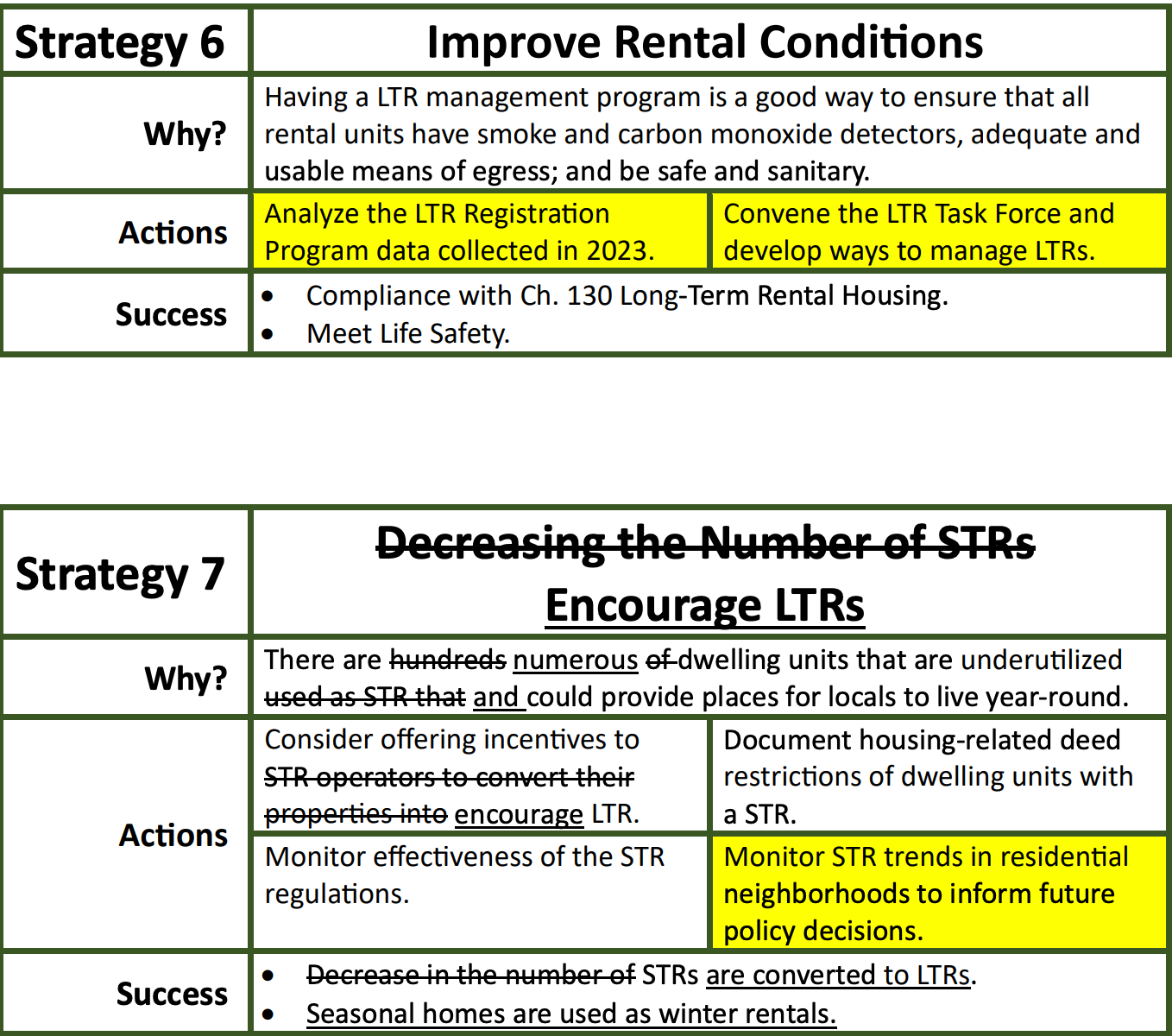
LOAVES AND FISHES FOOD PANTRY
As the Council heard a presentation from the Loaves and Fishes Food Pantry, Friedmann stepped off the dais because of a conflict of interest determined at a previous meeting.
Tracy Shaffer, co-president of the organization’s board of directors and Jessica Seavey, the program director presented the request to be included in the town’s budgeting process so that financial support would be considered.
Thirty-one families visited 407 times to the Ellsworth-based pantry in the last eleven months. “Right now the current rate per visit is about $17 and cost,” Shaffer said. That is just the food cost.
“It’s really a statement of partnership and future conversation,” Schaeffer said of the ask. “We want to build some camaraderie and talk about the commonalities.”
It passed 4-0; Friedmann abstained.
CONSENT AGENDA
The following items passed unanimously.
confirmation of manager’s town statutory officers
adoption of the 2023 Hancock County Hazard Mitigation Plan update
approval of use of downtown streets for Martin Luther King Jr. Day march
purchase of a plow truck
LINKS TO LEARN MORE
Higgins Pit Feasibility Study from 2020
https://www.townhallstreams.com/stream.php?location_id=37&id=50540
https://www.barharbormaine.gov/AgendaCenter/ViewFile/Agenda/3330?html=true
Marina plan images via GEI are in the below packet (first link)
https://barharbormaine.gov/AgendaCenter/ViewFile/Agenda/_12112023-3326
https://barharborstory.substack.com/p/coast-guard-weighs-in-on-cat-security
https://www.barharbormaine.gov/275/Harbor-Committee
https://barharborstory.substack.com/p/potential-marina-plans-approved-and
To stream Town Council meeting tonight.


